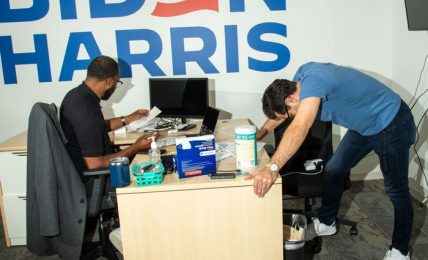© John McDonnell/The Washington Post
Former President Donald Trump participates in a tournament for LIV Golf at his Trump National Golf Club on May 25, 2023 in Sterling, VA. (Photo by John McDonnell/The Washington Post)
A Mar-a-Lago employee who helped move boxes of documents last June has been questioned about his conduct weeks later related to a government demand for surveillance footage from Donald Trump’s property, according to a person familiar with the federal probe of the former president’s handling of classified material.
The employee’s actions in June and July have caught the attention of special counsel Jack Smith’s investigators as they try to determine whether Trump or people close to him sought to obstruct justice in the face of a grand jury subpoena to return all documents marked classified, or lied about what happened, according to people familiar with the matter who spoke on the condition of anonymity to discuss a sensitive investigation.
The Washington Post reported last week that the employee was questioned repeatedly by investigators after he was seen on video footage helping another Trump aide, Walt Nauta, move boxes into a Mar-a-Lago storage room on June 2, the day before a top Justice Department official arrived with FBI agents to collect classified material in response to the subpoena.
Authorities have also examined events in mid-July surrounding a different subpoena, which sought footage from security cameras on the property. Around that time, the employee allegedly had a conversation with an IT worker at the site about how the security cameras worked and how long images remained stored in the system, the person familiar with that aspect of the investigation said.
The employee later told investigators that the conversation was innocent and was not about trying to hide anything from authorities, saying that he didn’t know at the time about the investigation or subpoena, according to another person familiar with the probe.
But those answers were met with skepticism, people familiar with the situation said.
John Irving, a lawyer representing the employee under scrutiny for helping to move the boxes and the security camera discussion, declined to comment for this story.
A spokesman for Smith also declined to comment.
Advisers to Trump said the former president was annoyed with conversations last summer over how to handle subpoenas seeking video footage. Ultimately, the security camera footage was turned over to investigators.
The classified documents case is one of four criminal probes involving the former president, who is also seeking the 2024 Republican presidential nomination. Smith is separately investigating the conduct of Trump and his inner circle in connection to efforts to block results of the 2020 presidential election. The district attorney in Fulton County, Ga., is doing the same. And Trump has been indicted in New York on charges of falsifying business records connected to hush money payments during the 2016 election.
People familiar with the classified documents probe say Smith’s team has concluded the bulk of its investigative work and believes it has uncovered a handful of distinct episodes of obstructionist conduct — though whether those instances will result in criminal charges is unclear.
Prosecutors have viewed with suspicion the timing of boxes being moved in and out of the Mar-a-Lago storage room.
On the night that the boxes were moved back into the storage area, Trump’s lawyers invited Justice Department officials to visit the former president’s residence and private club. The next day, June 3, senior Justice Department lawyer Jay Bratt and FBI agents went to Mar-a-Lago, where Trump’s lawyers handed over a sealed envelope containing 38 classified documents, according to court papers.
As part of that visit, the federal law enforcement officials were invited to visit the storage room, which is where Trump aides said boxes of documents from his time as president were kept. Court papers filed by the Justice Department said the visitors were told by Trump’s lawyers that they could not open any of the boxes in the storage room or look at their contents.
When FBI agents secured a court order to search Mar-a-Lago in August, they found more than 100 additional classified documents, some in Trump’s office and some in the storage area.
Trump and the Mar-a-Lago classified documents: A timeline
In a court filing in August explaining the search, prosecutors wrote that they had developed evidence that “obstructive conduct” took place in connection with the response to the subpoena, including that documents “were likely concealed and removed from the Storage Room.”
Prosecutors also have gathered evidence that even before Trump’s office received the subpoena in May, he had what some officials have dubbed a “dress rehearsal” for moving government documents that he did not want to relinquish, people familiar with the investigation told The Post last week.
Prosecutors separately have been told by more than one witness that Trump at times kept classified documents out in the open in his Florida office, where others could see them, people familiar with the matter said last week, and sometimes showed them to people, including aides and visitors.
Depending on the strength of that evidence, such accounts could severely undercut claims by Trump or his lawyers that he did not know he possessed classified material.


